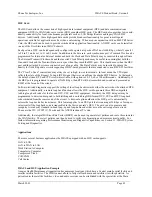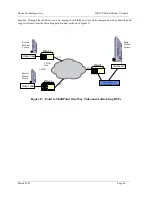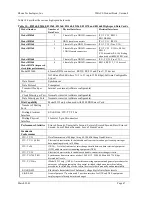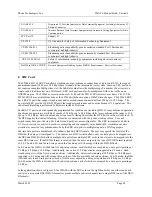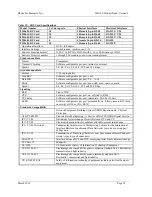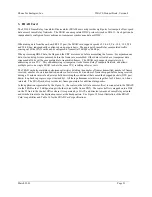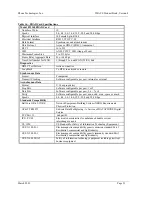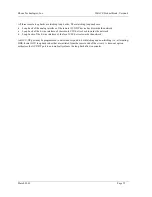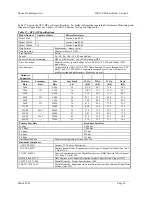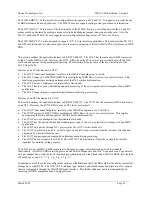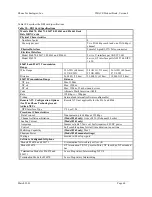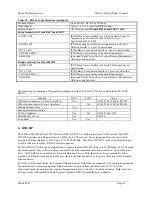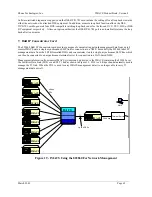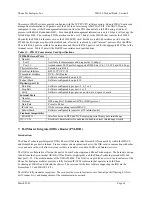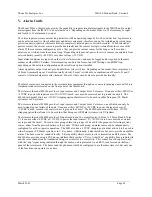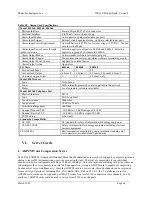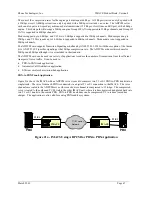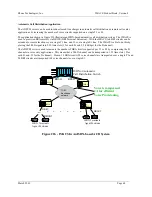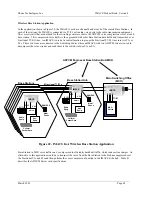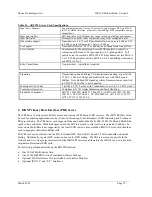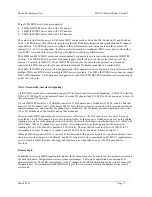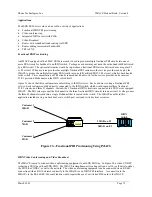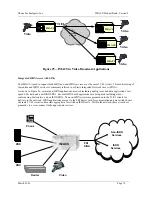
Zhone Technologies, Inc.
IMACS Product Book, Version 4
March 2001
Page 59
The 826070 BRI “U” Card has software configurable mode operation of LT and NT. It supports up to eight leased
or BRI terminal extension applications. The 826070 does not support sealing current generation or termination.
The 826171 BRI “U” Card has all of the functionality of the 826070, however, switching between the LT and NT
modes must be performed by making a menu selection and changing jumper connections on the card. Also, the
826171, unlike the 826070 the card supports a user configurable sealing current of 7.5mA or 15.0mA.
The 826270 BRI “ST” Card is designed to support “S/T” 4-wire interface applications. This card provides TE, NT1
and NT2 emulation and is commonly used to provide remote extension of four-wire BRI CPE devices from an ISDN
PBX.
This section outlines the applicable features in TR-NWT-000397. The LULT has the same master DSL transceiver
as the LT in the ISDN switch. However, the LULT differs from the LT in several respects that deal with the DSL
overhead and options for supporting multiplexing. The following list notes some of the key distinctions of the
LULT from the LT.
Features of an LT like line unit (LULT):
•
The LULT “functional backplane” interface is the IMACS backplane, not a switch.
•
The LULT supports 3-DS0 TDM (BRITE) for multiplexing ISDN Basic Access over a carrier system. This
implies appropriate processing and transport of the DSL overhead information.
•
The LULT acts as a multipoint eoc intermediate slave node.
•
The LULT has the option of disabling standard processing of the eoc to permit carrier transport of non-ISDN
applications.
•
The LULT supports generic segmented performance monitoring processing.
Features of an NT like line unit (LUNT):
This section outlines the applicable features in TR-NWT-000397. The LUNT has the same master DSL transceiver
as an NT1. However, the LUNT differs from an NT1 in several respects.
•
The LUNT “functional backplane” interface is the IMACS backplane, not a T interface.
•
The LUNT supports 3-DS0 TDM for multiplexing ISDN Basic Access over a carrier system. This implies
appropriate processing and transport of the DSL overhead information.
•
The LUNT acts as a multipoint eoc intermediate slave node.
•
The LUNT has the option of disabling standard processing of the eoc to permit carrier transport of non-ISDN
applications.
•
The LUNT only passes through NT1 power status bits or NT1-in-test-mode bits.
•
The LUNT originates nib and
aib
, as well as pass on any nib values received from the customer direction and
originated by a downstream line unit.
•
The LUNT supports generic segmented performance monitoring processing.
•
The LUNT does not require the ANSI T1.601-1992 NT1 dc termination. It provides a simple dc resistive
signature for metallic testing purposes.
The 826x70 series of IMACS BRI cards are also designed to support external timing part of the standard
functionality. All IMACS BRI cards support extensive built in diagnostics and tests. Loop backs can be generated
on a per channel basis; with choice of loop back generation mode and loop back codes. Built in BERT tests include
off, mark, space, and 1:1, 1:7, p_1, p_0, p_1:1, p_1:7.
In addition to all of the software configurable options on the BRI card itself, the BRI card has the ability to remotely
manage up to eight NTUs. The NTU’s DTE interface type, data rate and asynchronous baud rate are a few options
that are configurable through the IMACS BRI card interface. This further enhances network manageability by
accessing all ISDN equipment from a single platform.
Summary of Contents for IMACS Network Device
Page 1: ...IMACS Product Book...

